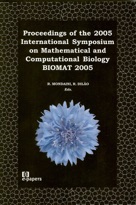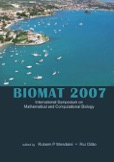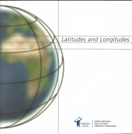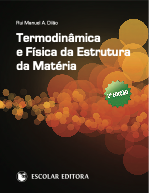Nonlinear Dynamics in Particle Accelerators, Rui Dilão and Rui Alves-Pires
World Scientific Series in Nonlinear Science, Series A, World Scientific Publishing, ISBN: 981-02-2517-2, 1996.
http://www.worldscibooks.com/physics/2983.html
From the Preface
Particle accelerators are instruments of increasing importance in scientific research and industry, playing a prominent role in our understanding of the constituents of matter and their interactions. On the other hand, the great dimensions and resources involved in their construction and use have a significant public impact. The scientific research and the high degree of technological development achieved in the construction of particle accelerators and associated equipment are stimulating the invention of new products and materials, the introduction of new methods of manufacturing, defining the frontiers of technology.
This book is an introductory course to accelerator physics at the level of graduate students. It was written for a large audience which includes users of accelerator facilities, accelerator physicists and engineers, and undergraduates aiming to learn the basic principles of construction, operation and application of accelerators. It covers the basic material for a one semester course in the physics and design of synchrotrons. In particular, chapter 1 is for the non-specialized reader.
In order to feel the main problems associated with the design of synchrotrons, we have included a software package to help the design of real synchrotrons, keeping control of the optical properties of beams. This software tool is based on the Mathematica programming language, and enables the reader to test its own skills in the design of synchrotrons. To guide the user in the optics of particle beams, we have included several examples of synchrotron design.
On the other hand, the new concepts of dynamical systems developed in the last twenty years give the theoretical setting to analyze the stability of particle beams in accelerators. In this book a common language to both accelerator physics and dynamical systems is integrated and developed, aiming to eliminate the difficulties faced by accelerator physicists, engineers and applied mathematicians when they try to join efforts in the attempt to improve the performance of synchrotron accelerators.
In chapter 1, after an historical introduction to the development of accelerators, the physical principles for their
design and construction are described. This chapter is self-contained and meets the needs of a simple course for the user of particle accelerator facilities. It was written at a very basic level.
In chapter 2, the equations of motion of a test particle in a synchrotron accelerator are derived. Transverse and
longitudinal motion are treated separately. The physics of radio-frequency cavities is derived and the nonlinear Poincaré map for the longitudinal motion is analyzed. Several case studies of stable orbits in synchrotrons and the principle of alternating gradient focusing are analyzed.
In chapter 3, some basic concepts of the Theory of Dynamical Systems are introduced and some of the results of the theory of nonautonomous differential equations and Poincaré maps are reviewed. Mathematical details are omitted and referred to specialized articles. The concepts of tune and dynamic aperture, familiar to the accelerator physicist, are explored in the context of dynamical systems where they have the meaning of rotation number and stability limit around a fixed point. The geometric aspects of chaotic behavior in conservative maps and homoclinic and heteroclinic explosions are explained. The concepts of linear, nonlinear and parametric resonance are discussed in detail, as they play an important role in the working point of a synchrotron. These results will be important in chapters 5 and 6 where the parameters of dynamically nonlinear synchrotrons are analyzed and predicted.
In chapter 4, the Courant and Snyder linear theory of the transverse motion of particles in synchrotron accelerators is presented and its stability analyzed. These methods are the main tools for accelerator design. The thin-lens approximation is introduced and the general Poincaré map for the transverse motion is derived.
Basic techniques of the theory of dynamical systems are presented in chapter 4 and are used to analyze beam aberrations and to calculate the chromatic correction. We obtain the general formula for the chromaticity parameter, which is critical in the choice and location of sextupoles in large synchrotrons.The problems of momentum correction, field errors and imperfections are analyzed in detail.
With the tools developed in chapter 4, a simple computer program was developed by the authors to design synchrotrons. The code uses the energy, characteristics of magnets and straight sections as input parameters. This program determines the stability of the design orbit, calculates chromaticities, Poincaré maps, tunes, slip factor and the popular Courant and Snyder beta, alpha and gamma functions, and dispersion.
In chapter 5, the Poincaré map for a synchrotron with nonlinear magnetic fields is derived. Based on the theory of dynamical systems exposed in chapter 3, nonlinear optimization strategies for the strength of sextupoles and tune shift are derived. The problem of nonlinear tune resonances and dynamic aperture is analyzed and discussed in detail. This material corresponds to previous published work of the authors. In order to compare theoretical results with real design situations we have compared our predictions with the design simulations of the Large Hadron Collider under design and study at CERN. The predictions obtained agree within a relative error of the order of 1%.
Chapter 6 concerns the study of the beam-beam interaction.Stability conditions, tune and tune shift values for the nonlinear beam-beam map are derived.The dimensions of the chaotic annular region around the central design orbit are estimated.
Table of Contents
1 Introduction to accelerator physics 1
1.1 Introduction 1
1.2 Accelerators in medicine and industry 4
1.3 Nonlinear phenomena in particle accelerators 6
1.4 Acceleration and guiding of charged particles. Physical principles 7
1.5 Accelerator types 10
1.5.1 Linear accelerators 10
1.5.2 The cyclotron 11
1.5.3 The isochronous cyclotron 11
1.5.4 The synchrocyclotron 11
1.5.5 The betatron 12
1.5.6 The synchrotron 12
1.6 How to build a synchrotron accelerator 13
1.6.1 Confinement 13
1.6.2 Acceleration 17
1.6.3 Focusing 20
1.7 Synchrotron radiation 24
1.8 A short guide to accelerator bibliography 27
2 Equations of motion 29
2.1 Equations of motion in the transverse plane 30
2.1.1 Transverse motion in straight sections 32
2.1.2 Transverse motion in straight sections with special purpose magnets 34
2.1.3 Transverse motion inside dipoles 38
2.2 The design orbit and its stability 41
2.3 Focusing properties of pairs of quadrupoles 48
2.4 Longitudinal motion 52
3 Introduction to the qualitative theory of nonlinear differential equations 63
3.1 Phase space, fixed points and stability 65
3.2 Floquet theory 74
3.3 Poincaré maps 78
3.4 Maps of the plane. Homoclinic and heteroclinic orbits 82
3.5 Normal forms for two-dimensional conservative maps 90
3.6 Tune, tune shift and resonance 98
4 Dynamics and stability of guiding and focusing. Linear optics of synchrotrons 103
4.1 Transfer matrices, Poincaré maps and integrability of the equations of motion 104
4.2 The Courant and Snyder $\beta$-function 107
4.3 Invariants, emittance, beam envelope and admittance 115
4.4 Simple examples of synchrotron design 121
4.5 Off-momentum motion. The dispersion function 126
4.6 Focusing-defocusing (FD) and focusing-bending-defocusing (FBD) basic cells 130
4.6.1 The FD cell 132
4.6.2 The FBD cell 136
4.7 Chromaticity and chromatic correction 138
4.8 Linear field errors 145
4.9 The design of a synchrotron 147
5 Nonlinear motion in the transverse plane: sextupoles 153
5.1 Nonlinear equations of motion in the thin lens approximation 155
5.2 Tracking simulations 160
5.3 Chromatic correction 167
5.4 Beam lines with one sextupolar error 170
5.5 Coupled motion in the two transverse directions 172
6 The beam-beam interaction 175
6.1 Equations of motion for the beam-beam effect 177
6.2 The general Poincaré map for localized interactions 178
6.3 The beam-beam force 181
6.4 Dynamics of the linearized beam-beam Poincar\'e map 182
6.5 The nonlinear beam-beam map 186
6.6 Beam-beam tune shift 191
Appendices
A1 Motion of relativistic charged particles in uniform electromagnetic fields 195
A2 An accelerator design program 199
A3 The $\bar p$ accumulator design 209
References 215
Subject index 221










